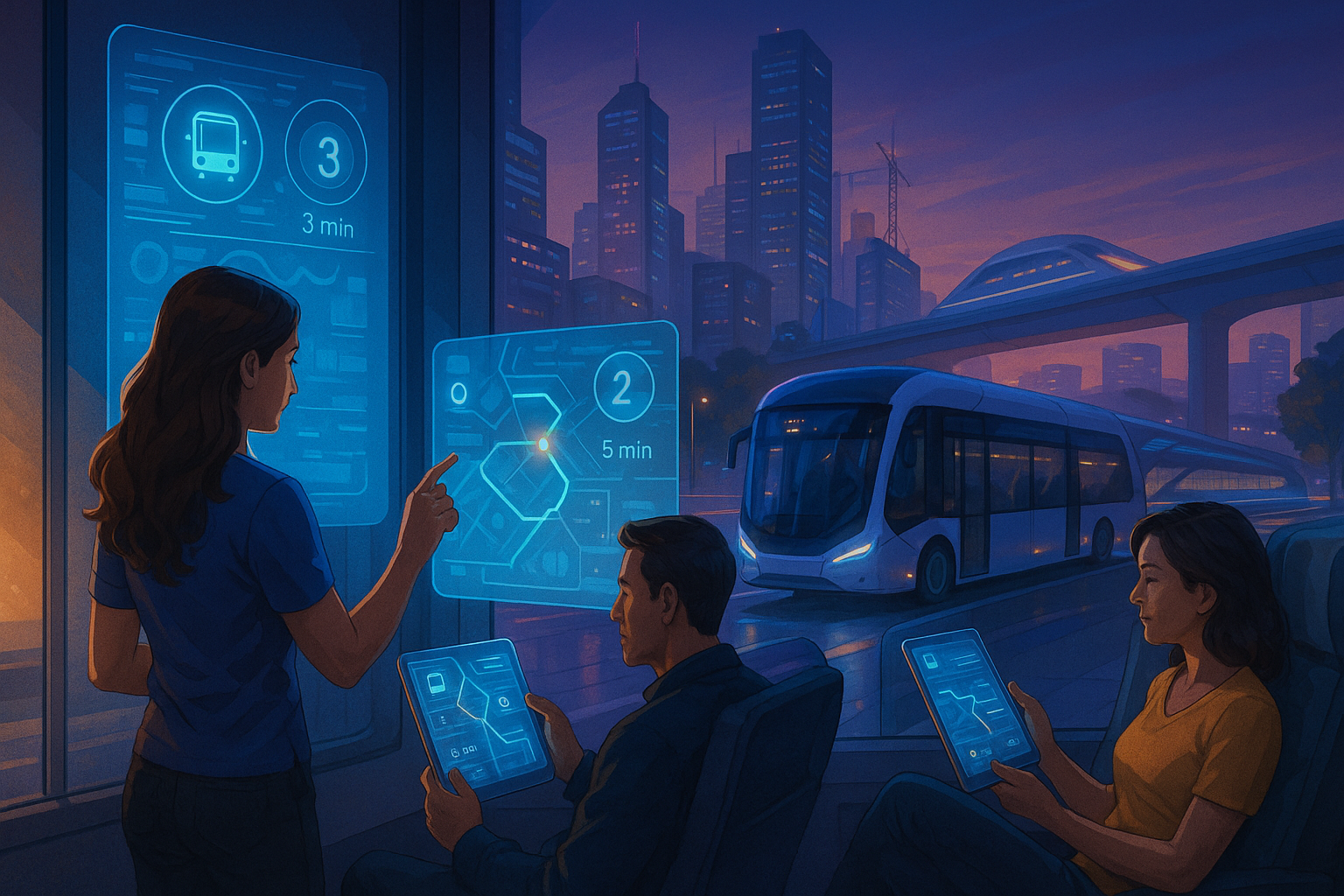Passenger-Centric Transport: Enhancing Experience with AI-Powered ITMS

When you consider transport, you might picture trucks, highways, and timetables. But stand back and take a closer look, however, and transport's all about people. Rushing commuters going to work, weekend-away families going out, children going on the bus to school—each trip's got a story. To go well, those stories need the experience behind them to transcend the practical. It's got to be on time, it's got to be comfortable, but it's got to be personal as well.
That's where AI-enabled Intelligent Transport Management Systems (ITMS) are breaking the mould. Originally developed primarily for fleet monitoring and route management purposes, ITMS evolved into something more. Infused with artificial intelligence as its foundation, it's learning to view transport the way customers view it—not as mere movement, but as an experience.
- From Operations to Experiences
Traditional ITMS worked well for operators. They could monitor vehicles, optimize schedules, and keep systems running. Passengers, however, often felt like they were on the outside looking in. They had little control, little information, and little personalization.
The AI is reversing that. Rather than just instructing cars where to go, the ITMS now listens, anticipates, and adjusts according to passenger requirements. The attention has shifted from the system itself to the people who rely on it each and every day.
- Journeys That Feel Personal
You imagine you're just heading out for work. Just as you set about leaving the house, the phone vibrates as it receives an incoming message: "Your usual bus is held up by 10 minutes. Here's an alternate route that will also get you there on time."
That's not coincidental—it's AI. Through the analysis of traffic situations, history, and moment-by-moment data, the ITMS can provide recommendations that seem tailored just for you. With time, it gets to know you too: the routes you like best, the times you tend to travel, even how much you're willing to tolerate in delays. Travel now feels less of a hassle but more of an accommodated service that gets to know you.
- No More Guesswork
One thing riders don't like is ambiguity. Wandering at the corner waiting for the next bus to arrive—or hoping it ever will—makes them anxious. AI takes the ambiguity away. Through real-time communication and monitoring, the ITMS keeps the passengers informed through clear and concise messages. Delays, rerouting, or unexpected changes are announced instantly through apps, electronic signs, or voice messages. Passengers don't speculate; they know what is happening. And it makes all the difference when it comes to how they feel about their ride.
- Intelligent Management of Crowds
We've all been there—you've jammed onto an overcrowded train or bus in the hopes the next one won't be so crowded. It's one of the most common grievances about using public transport. Artificial intelligence is helping transport operators overcome the problem by predicting the movement of people.
It analyzes schedules such as peak office hours, school hours, weather, and urban activities in order to predict demand. In doing so, it allows for additional buses where the greatest demand lies or unpopular routes to be modified. Riders enjoy more space, less waiting time, and less frustration.
- Sense of Assured Protection
For passengers, safety isn’t negotiable. It’s the one part of the experience that always comes first. AI enhances safety by analysing live data—from driver behaviour to road conditions—and spotting risks early.
It may alert a tired-looking bus driver or identify unexpected congestion liable to cause accidents. Rather than waiting for issues before they occur, AI enables operators to avoid them. Although people may not directly witness this technology at work, they enjoy the benefits in the form of smoother, safer trips.
- Smooth Exchanges between Modes of Transport
Few today use only one mode. It might use the bus for part of it, the subway for the remainder, then the ride share for the final mile. Unless it's coordinated, it's confusing.
It simplifies all of this by consolidating it all through AI-driven ITMS. Travellers get integrated journey plans and smart ticketing options, as well as an integrated payment facility. Instead of having to juggle apps or paper tickets, they can move seamlessly from mode to mode.
- Why It Matters
Passenger-first thinking produces a win-win. Passengers get better results—less time waiting around, more comfort, and more confidence. Operators get more efficiency and retention, too. People who are looked after come back time after time, making the whole system more sustainable.
Challenges Along the Way
Of course, it takes no small degree of effort to adopt AI. It's crucial to collect and utilise data responsibly. Riders need to feel secure that their data won't fall into the wrong hands. But AI isn't perfect—human management will still be required for making some decisions practical and fair. It also costs and takes time to bring the technologies into the existing infrastructure.
The Future
What we're just starting to see today will only continue to grow. As AI advances, the ITMS gets progressively more intelligent. Systems will not only know when you need the bus but also how you'd like it, in terms of how green the route is, how quiet the ride might be, and how accessible it's designed.
The future of mobility will not only be smart but also caring—transport made for people, not just for machines.
Conclusion
AI adds the human touch to Intelligent Transport Management Systems. With the provision of the latest updates in real time, personalised travel recommendations, improved safety, and connectivity, it's making transport less about the vehicle and more about the human being who operates it.
At Arenasoftwares, we’re proud to be part of this shift. Our AI-powered ITMS solutions are built to create journeys that are smarter, safer, and more passenger-friendly. Because at the end of the day, transport isn’t about technology alone—it’s about making every passenger’s journey better.
